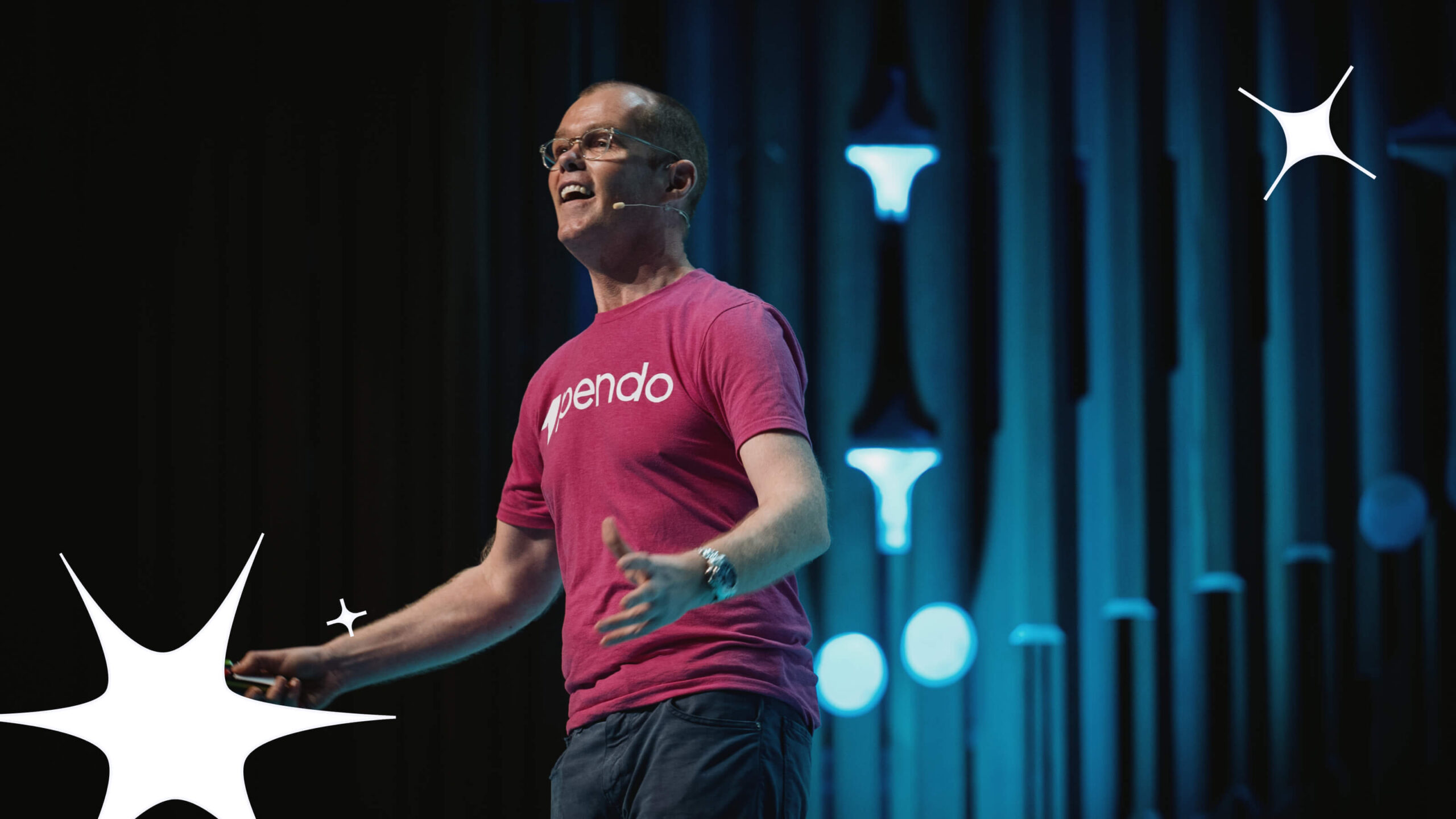When I first learned about Pendo, I didn’t fully grasp the meaning and impact of its mission to “elevate the world’s experience with software.” Having spent years focused on the public sector, the idea of governmental entities operating like a software company and being product led seemed aspirational at best.
And then one day, while I was trying to renew my eight year old son’s passport online, it clicked. I was stuck on a screen where I had an option to either renew or obtain a new passport. I had clicked the renew button, only to spend the next 15 minutes trying to figure out why the “next” button continued to be grayed out. A Google search eventually revealed that you cannot renew a minor’s passport, you must get a new one.
I was left feeling incredibly frustrated. And it dawned on me: This is why every organization must operate like a software company, especially in the public sector. Software and the experiences it creates are what determine whether the mission succeeds.
One quarter into this pivotal chapter of my career, I could not be more excited about what Pendo can do for the public sector. When I first made the decision to join Pendo to build out our public sector vertical, I knew we had a big task ahead of us. I had spent years watching massive technology projects fail to deliver on their expected value due to lack of adoption and poor change management. Now, having had the chance to meet with government agencies, nonprofit organizations, higher education institutions, and thought leaders, I realize the opportunity is bigger than I could have ever imagined.
Meeting rising consumer demands and expectations
It’s no secret that consumers’ expectations of digital experiences are getting higher every day. Sadly, when one thinks of amazing digital user experiences, the public sector doesn’t typically come to mind.
When the average citizen thinks of interactions within the public sector, images of long DMV lines, piles of paperwork (yes, actual paper), and dated and confusing digital interfaces are usually what surface. And there’s a reason for this: Public sector organizations are risk-averse, regulated to the point that they must prioritize minimizing risk over driving innovation. What’s more, because of government compliance requirements, many cutting edge technology companies choose to forgo the public sector altogether, instead focusing their innovative solutions only on the private sector.
At Pendo, we want to change this. After spending the first part of my career focused on the private sector, I quickly learned the stark differences and significant complexities that make it challenging for our public sector organizations to effectively leverage technology to support their missions. And I’ve seen firsthand how government and other public sector organizations struggle with large-scale digital transformation initiatives.
But with the pandemic’s acceleration of digital transformation efforts, from hybrid work to online learning, the timing is right for real change. “Doing it the way we always have” is no longer an option.
The current administration is also taking real steps to continue to drive transformation. Consider the recent executive order on improving the federal customer experience, or the President’s Management Agenda prioritizing “Strengthening and Empowering the Federal Workforce and Delivering Excellent, Equitable, and Secure Federal Services and Customer Experience.” With the solutions Pendo provides to public sector organizations, they’ll have a real opportunity to improve the user experience both for citizens and public servants to better drive their mission.
Public sector challenges
The public sector encompasses the federal government, state and local government and education (SLED), nonprofits, and nongovernmental organizations (NGOs). Each faces their own set of unique challenges and goals.
A nonprofit, for example, may need to streamline how it processes volunteer applications and onboards volunteers in a time of need. A higher education institution may aim to improve the digital experience for students applying and registering for courses, or for alumni making donations or purchasing event tickets. A government agency, meanwhile, may need to simplify a citizen-facing digital solution, like modernizing the aforementioned paper-intensive and confusing passport renewal process. And all these organizations are fighting the same war for talent and looking to create experiences that help employees be productive and feel rewarded and included.
While these challenges may differ in their specifics, they all come down to software: How well it meets user expectations and needs, and how effective it is in pushing the mission forward. That’s where Pendo comes in.
Leveraging investments that have already been made
Last year, Accenture reported that although 75% of public service leaders around the world agreed that technology architecture is critical to overall organizational success, most believed outdated technology was holding them back. Ultimately, Pendo is software that makes your software better. That includes making legacy systems more efficient and useful. Given that budget and security constraints often limit the amount of software that public sector organizations can shift in and out, Pendo helps maximize the return and value of the digital investments you’ve already made.
Rather than rip and replace software whole cloth, leveraging customizable guidance delivered within the app lets organizations optimize onboarding and support, both for citizens and employees. Robust analytics lets teams see the flow of engagement across multi-app paths and workflows and spot where users may be getting stuck. And comprehensive feedback management lets citizens and employees themselves have a voice, ensuring their priorities and concerns don’t go unaddressed.
Pendo is also a critical tool for public sector transformation partners, including systems integrators who help implement massive multi-million dollar projects with dozens of different software products. Pendo’s analytics helps them understand how the tech stack is performing, both within and across apps, and provides a means for helping the end user better navigate each tool and provide real-time feedback. Managing software implementation today doesn’t end at “go live.” It’s a process of continuous monitoring and improvement. And as the saying goes, “you can’t improve what you don’t measure.”
Embracing the idea that software drives your mission
The reality is that every organization is now a software organization—including those in the public sector. While the products and services they deliver may differ vastly from those of the private sector, the experiences these organizations create should not. In order to meet citizen and employee expectations today, public sector orgs need the right tools—tools that help them become product led and put the user at the center of their digital technology decisions.
I firmly believe we’re not far from the day when Pendo will be wrapped around every large-scale digital transformation effort happening in the public sector. How we’ll get there will be the subject of my next blog. Stay tuned, we’re on an exciting journey!
Learn more about how Pendo is helping transform the public sector here.


